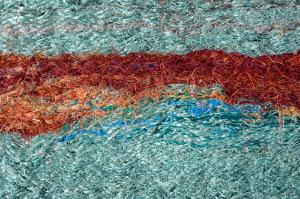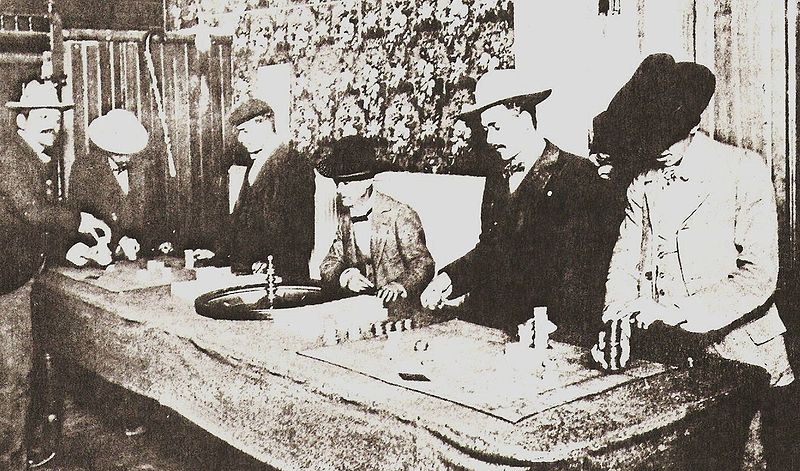Does this look like a dump?
Posted on | January 6, 2011 | 2 Comments
 The Pasadena Star-News has the latest on Los Angeles County’s plans to clear cut 11 acres of native woodland for use as a dump site for sediment from the Santa Anita Dam. The Sierra Club, California Oaks, Pasadena Garden Club, Pasadena Audubon Society, Sierra Madre Mountain Conservancy and San Gabriel Mountains Chapter of the California Native Plant Society are circulating a petition to save the Arcadia grove of oaks and sycamores. Short comments are admitted by the petition. Mine, along with this briefest of background, boiled down to this: To keep our trash from reeking as it hits landfills, waste managers use lawn clippings as “Alternate Daily Cover.” These clippings could be composted and storm debris used instead. In other words, why waste perfect landfill material on pristine woodland? Objections that trucking sludge causes pollution are certainly valid but given that we already cart around our trash and yard clippings every week, I would need convincing that we need to dump yearly storm debris on unblemished sites because we’re suddenly so squeamish about transport. For a December LA Times piece, click here and LA Creek Freak on it, here and here. Rancho Santa Ana Botanic Garden research fellow Barbara Eisenstein has a first class chronology of events and links at her website Weeding Wild Suburbia. Joshua Link has built on that and provides an exhaustive overview on LA Creek Freak. For the California Native Plant Society San Gabriel Mountains Chapter open letter, click here.
The Pasadena Star-News has the latest on Los Angeles County’s plans to clear cut 11 acres of native woodland for use as a dump site for sediment from the Santa Anita Dam. The Sierra Club, California Oaks, Pasadena Garden Club, Pasadena Audubon Society, Sierra Madre Mountain Conservancy and San Gabriel Mountains Chapter of the California Native Plant Society are circulating a petition to save the Arcadia grove of oaks and sycamores. Short comments are admitted by the petition. Mine, along with this briefest of background, boiled down to this: To keep our trash from reeking as it hits landfills, waste managers use lawn clippings as “Alternate Daily Cover.” These clippings could be composted and storm debris used instead. In other words, why waste perfect landfill material on pristine woodland? Objections that trucking sludge causes pollution are certainly valid but given that we already cart around our trash and yard clippings every week, I would need convincing that we need to dump yearly storm debris on unblemished sites because we’re suddenly so squeamish about transport. For a December LA Times piece, click here and LA Creek Freak on it, here and here. Rancho Santa Ana Botanic Garden research fellow Barbara Eisenstein has a first class chronology of events and links at her website Weeding Wild Suburbia. Joshua Link has built on that and provides an exhaustive overview on LA Creek Freak. For the California Native Plant Society San Gabriel Mountains Chapter open letter, click here.
Hat tip to Joshua Link. This post has been updated. Links have been added.
The week that was, 12/26/2010-1/1/2011
Posted on | January 2, 2011 | 1 Comment

Tropical Storm Tasha caused flooding that affected an estimated 200,000 people in Queensland, Australia. Image: NASA. Click on the image to be taken to the Earth Observatory.
“This is without a doubt a tragedy on an unprecedented scale.” — Queensland Premier Anna Bligh on Australian floods covering an area larger than France and Germany combined, Floods in northeast Australia strand 200,000, AP / Los Angeles Times, December 31, 2010
… parts of the South had their first white Christmas since records have been kept. — East Coast blizzard strands travelers, frustrates drivers, Los Angeles Times, December 27, 2010
Around 32,000 properties are still without water in Belfast and surrounding towns after pipes burst during the freezing weather and subsequent thaw before Christmas, Water torture: Tankers on standby with supplies for Ulster as families tell of misery, Daily Mail, December 31, 2010 Click here to continue reading
High good, low bad: Mead in December 2010
Posted on | January 1, 2011 | No Comments
The good news in the last hour of 2010 was that Lake Mead was 4.36 feet higher than the closing elevation for November. The bad news is that a winter bump is not unusual and, at ten feet lower than the closing December elevation for 2009 and at 40% capacity, the main storage reservoir on the Colorado River is 11.3 feet above a level that will trigger cuts for Arizona and Nevada.
Nerves are bad enough in the Grand Canyon State that the Arizona Republic reported this week that water managers are considering leaving part of their 2011 Colorado River allocation in Mead to forestall mandatory cuts. Larry Dozier, deputy general manager of the Central Arizona Project, told the Republic: “If we leave a little water this year, we won’t take the bigger hit the next year. Then we can take another spin on Mother Nature’s roulette wheel and see what happens.” The closing December elevations for the last decade are below. For elevations going back to the reservoir’s impoundment, click here to be taken to the federal Bureau of Reclamation. Click here for closing December elevations for the last ten years
The Dry Garden: New Year/Water Year
Posted on | January 1, 2011 | No Comments
Saturday may mark the start of the 2011 calendar year, but the 2011 water year, the 12-month cycle used by hydrologists and water managers, began on Oct. 1.
Few Southern California water years have begun on such a dry note. Three months ago, a strengthening La Niña pattern in the Pacific suggested to climatologists that we were staring at a water year so potentially dry that it could make your voice rasp.
Then in December a weather system known as the Pineapple Express carried near-record rains through California. The upshot in Los Angeles County is that most places have already received half or more of the rain expected for the entire season. It’s reasonable to expect that when the 2011 water year ends Sept. 30, we will have reached or surpassed the regional average of about 16 inches, with numbers that are higher in the foothills and lower in the basin.
If we all kept gardens stocked with native plants equipped to survive on local rain, and our properties were all designed to prevent rain from running off into storm drains, this would be manna. But we don’t. As cheering as it was to see a new building ordinance passed in December calling for better water management in new construction, we in greater Los Angeles have a long way to go before local rainfall does much more than flow from the streets into the Pacific.
Click here to keep reading this week’s Dry Garden in the Los Angeles Times. Then come back and click here for a new January calendar of Dry Garden Events. Also watch Lisa Boone’s excellent Datebook column in the Los Angeles Times Home section for wide-ranging garden listings. For captions to the gallery of photos touching on some highlights of 2010, pass your cursor over the image. Finally, happy New Year!
The week that was, 12/19-25/2010
Posted on | December 26, 2010 | 1 Comment

Detail of fishing net tapestry "Kalama 1" by Mary Babcock, part of "Hydrophilia" at Hawaii Pacific University. Click on the image to be taken to the university website.
“I think it’s seasonal. The nets seem to wash up during the winter.” — Artist Mary Babcock, maker of tapestries from old fishing nets, Ocean Meditations, Honolulu Star-Advertiser, December 19, 2010
Mexico will leave part of its Colorado River allocation in Lake Mead for the next three years, slowing the decline of the drought-stricken reservoir and possibly delaying the onset of water rationing in Arizona and Nevada. — Colorado River deal aids US and Mexico, Arizona Republic, December 21, 2010
Enough water poured from Los Angeles streets to supply well over 130,000 homes for a year. — In a region that imports water, much goes to waste, Los Angeles Times, December 24, 2010
… with our watersheds nicely saturated by several days of rainfall, today’s predicted storm, if its rainfall is as intense as described on our isohyets, is like the powerhouse batter that can sweep when bases are loaded. Since we’ve built in our floodplains, we probably won’t like that particular home run. — How to figure out a fifty-year storm (and other storms too), LA Creek Freak, December 22, 2010
… much of the Delta is a remote, labyrinthine wateriness that, for most people, exists only in the mind, wrapped in an impenetrable mist. — California’s tangled water politics, High Country News, December 20, 2010
Click here to keep reading ‘The week that was’
« go back — keep looking »


